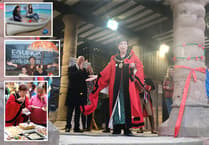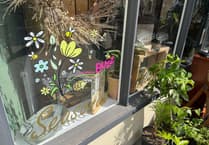Ross has been listed amongst a number of hotspots for Japanese knotweed in Herefordshire.
Listed behind Knighton and Goodrich, Ross-on-Wye is mentioned as the third most significant hotspot for the invasive plant, with 11 sightings within a 4km radius. Ross comes above Hereford which has seven sightings within its 4km radius.
Japanese knotweed first arrived in UK in 1850 in a box of plant specimens delivered to Kew Gardens. Favoured for its rapid growth and heart-shaped leaves, it was quickly adopted by gardeners and horticulturists who were oblivious to its invasive nature. Knotweed hibernates over winter but in spring it begins to grow, with red or purple spear-like shoots emerging from the ground which quickly grow into lush green shrubs with pink-flecked stems and bamboo-like canes.
In May the plant starts to grow rapidly, the stems harden into bamboo-like structures and the leaves, which grow in a zigzag pattern up the stem, are green and heart-shaped. By mid-summer the plant can grow at a rate of around 10cm per day, with mature plants forming dense stands two or three metres tall. In August the plant blooms, with small clusters of creamy white flowers appearing on the upper leaf.
For homeowners, the plant can pose serious problems if left unchecked. It has the potential to grow up through cracks in concrete, tarmac driveways, pathways, drains, and cavity walls. The roots can grow as deep as three metres and spread up to seven metres horizontally.
Whilst serious damage to property is rare thanks to regulations which requires knotweed to be dealt with when a property is sold to a buyer using a mortgage or if it encroaches across a garden boundary, it commonly impacts use of the garden, causes legal disputes between neighbours, and can impact a property’s value by around five per cent.
According to invasive plant specialists Environet, approximately five per cent of homes are currently affected by knotweed, either directly or indirectly.




